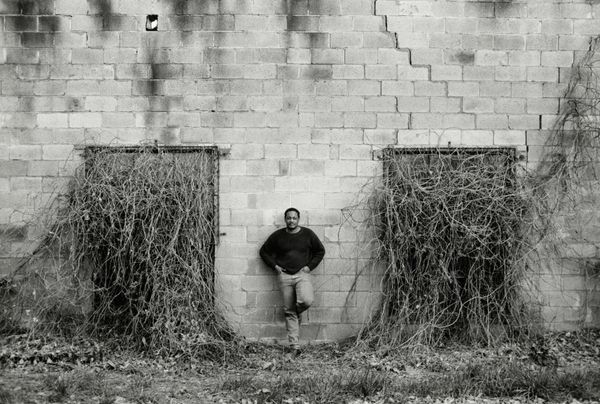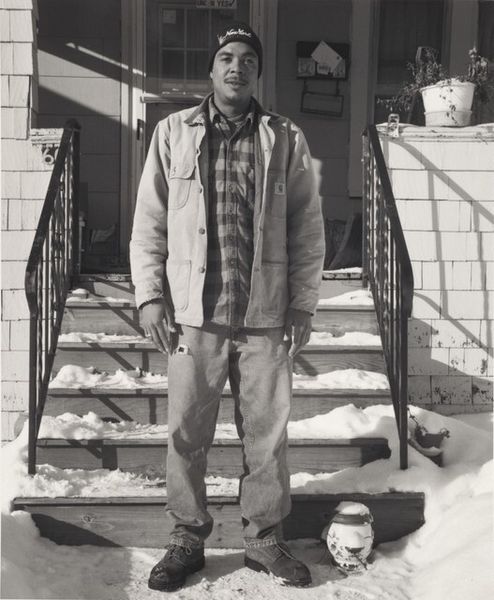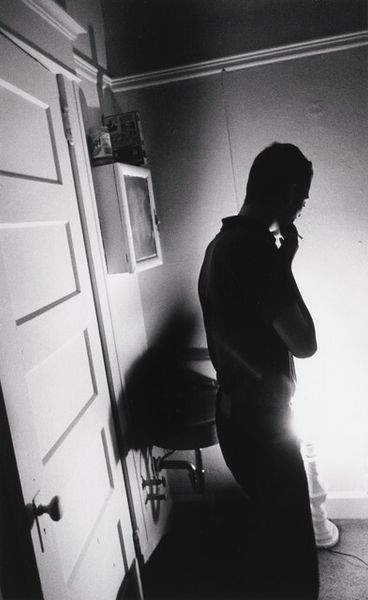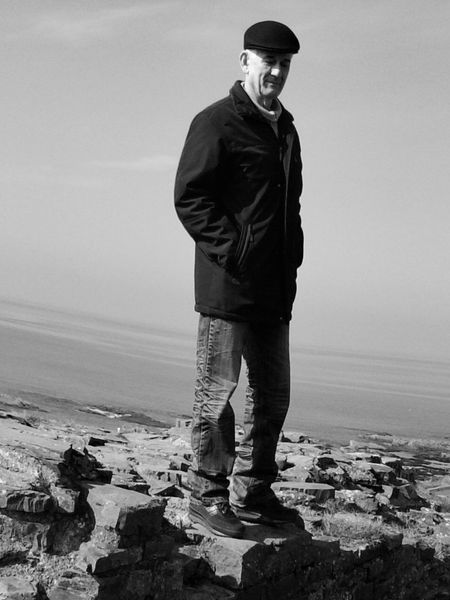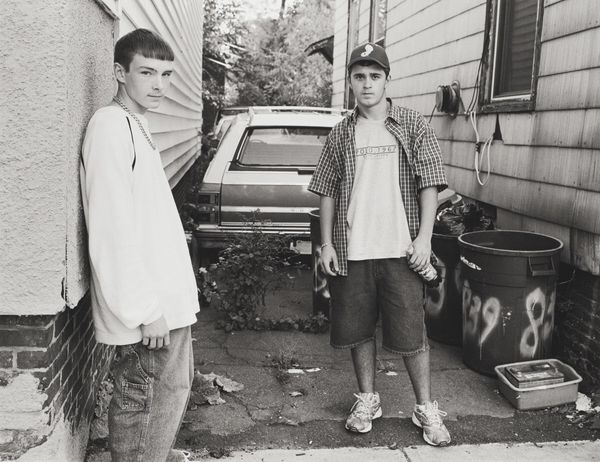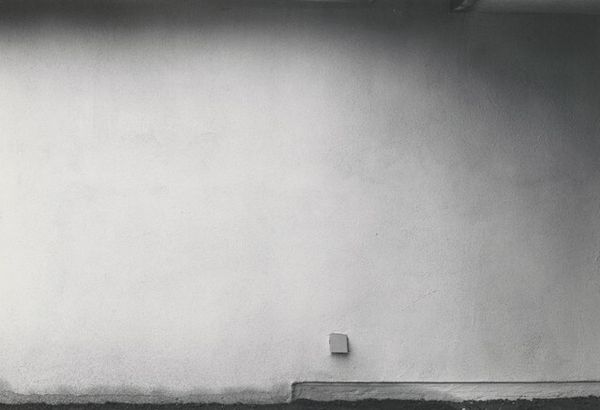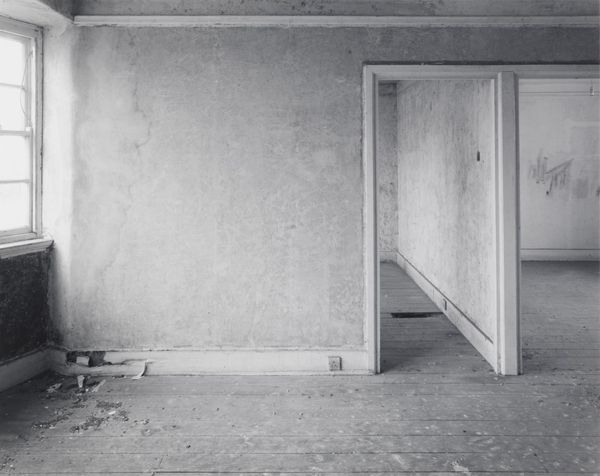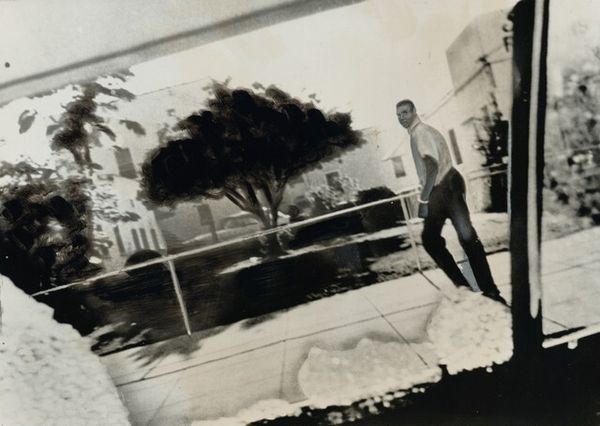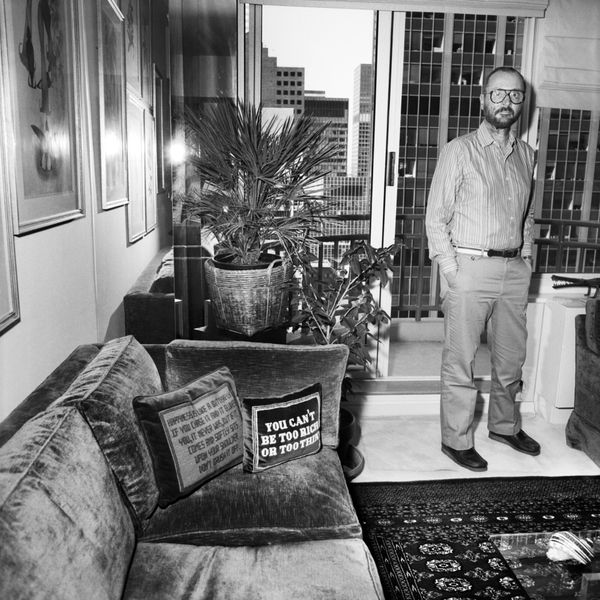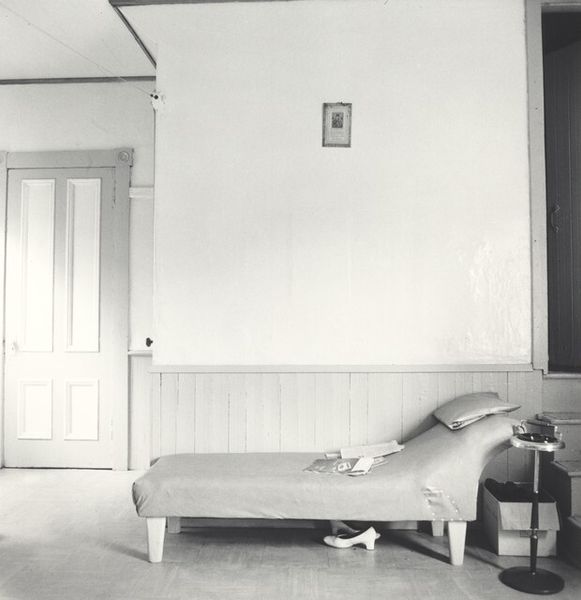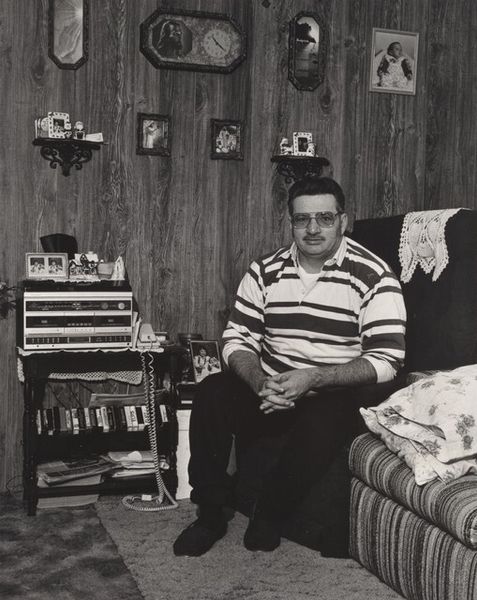
photography
#
portrait
#
social-realism
#
street-photography
#
photography
#
street photography
#
realism
Dimensions: image: 18.1 x 15.2 cm (7 1/8 x 6 in.) sheet: 25.2 x 20.3 cm (9 15/16 x 8 in.)
Copyright: National Gallery of Art: CC0 1.0
Curator: Looking at this striking black and white photograph by Milton Rogovin, taken in 1992, part of his "Lower West Side Series" simply titled "Victor", I am immediately drawn in. Editor: There's something so matter-of-fact and melancholy about it. It is very gritty. The texture of the brick, the chair. I want to run my hand along them to see how they feel. Curator: Rogovin was deeply committed to documenting working-class communities, turning his lens toward those often unseen by mainstream society. Consider his photographic process: capturing daily life on the streets. Editor: Yes, the everyday realities are potent, but it seems incredibly constructed. It's a street portrait, certainly, yet posed carefully against this rather stark backdrop, next to an empty chair. Almost like an informal studio setting on the sidewalk. Curator: I think it underlines how social realism, as an artistic mode, relies on very specific framing. The sitter, "Victor", becomes representative of the community through considered composition, emphasizing particular details like the flannel shirt, jeans and his weathered face. Editor: The brickwork looks repaired in places, possibly reflecting economic circumstances of the area, but how much does the consumption of this art affect any real, tangible impact on such areas? The image seems to capture a period. It’s not necessarily time that stands still, but the circumstances the man lives under that is motionless, while everything progresses beyond him. Curator: Indeed, one can examine how photography here functions almost as a raw material— evidence but not proof—shaping social consciousness. By showing the means and environments by which communities survive, we begin to perceive how those mechanisms change over time. Editor: Exactly. "Victor" provides such striking visual material. His stoicism. The chair almost invites the viewer into a space for consideration. Looking back on it now, decades after it was shot, it is as important historically as it is artistically. Curator: I appreciate how Rogovin brings social and artistic practice so clearly to our attention. The work highlights the material of reality and the process by which we recognize it as such. Editor: Absolutely, it also provokes a very valuable opportunity to examine the ways images circulate within society, and question how we assign value to lives that history often neglects.
Comments
No comments
Be the first to comment and join the conversation on the ultimate creative platform.

